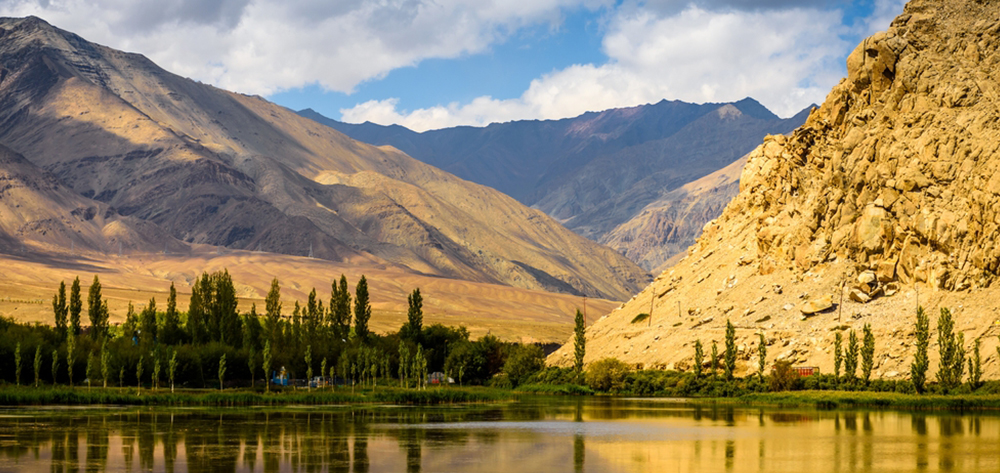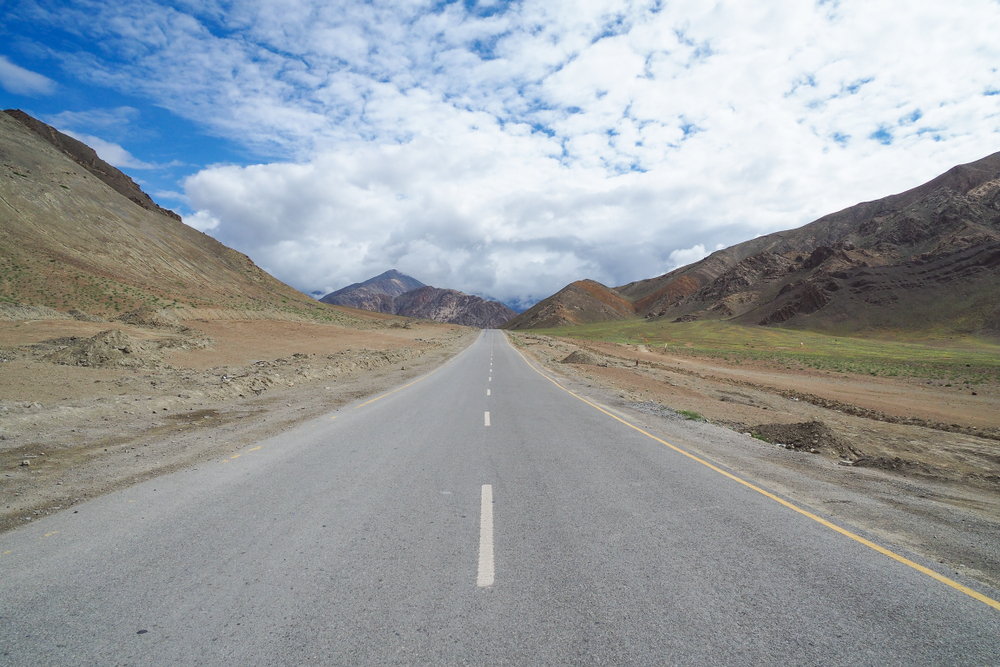- Feedback
- Sitemap
- Skip to Main Content
- Screen Reader Access
- A+ A A -
- A A
- Control Room No. - 9205949400, 011-26768950
Ladakh NH 301 Kargil – Zanskar Highway

Ladakh NH 301 Kargil – Zanskar Highway
Building highways in the mountains has always been challenging even for the most proficient engineers. This assumes greater significance when these skillful engineers set out to build highways at an altitude of over 10,000 feet in the Himalayas. Besides these, when the highway is being constructed at one of the world’s most sensitive areas with a history of being a battlefield, the magnitude of the effort becomes noteworthy.
This is about the National Highway (NH) – 301 that will link two of the remotest locations, Kargil to Zanskar Valley in Ladakh. The name, Kargil instantly reminds every Indian of the famous war fought between India – and Pakistan in 1999. Many places near Kargil, including Tiger Hills have been part of the war theatre during the 1999 Kargil war. Since then, the entire region between Kargil and Zanskar has featured prominently in India’s strategic landscape increasing the need to build and enhance road infrastructure in the region both for strategic and civilian needs. The 230km long highway is being built by the National Highways & Infrastructure Development Corp (NHIDCL), which will ease the lives of the local population and will also help our strategic forces in the near future.
NH-301 will prove to be an invaluable infrastructural asset for the movement of our troops and heavy weapons, especially after the completion of Shinku-La Tunnel. This tunnel is being built by the Border Roads Organisation (BRO). The highway will also become the shortest route to Kargil through Manali, Darcha, and Padum areas and will be instrumental in developing these remote areas. It will also enable the development of eco-tourism hubs in the region, where travel enthusiasts can explore the little-known exotic places in the Himalayan foothills.
 A journey from Kargil to Zanskar Valley allures the traveller with its cool breeze, snow-capped mountains, and clear blue skies. However, travelling to many places between Kargil and Zanskar Valley always remained troublesome due to the lack of all-weather roads and sturdy transport infrastructure. After the completion of the highway, places including the famous Tiger Hill, Suru Valley, Kargil Dam area, Sani Monastery, and Pangong Lake will become accessible to tourists. Tiger Hill is one of the critical strategic points in the region, the development of the highway will make it accessible to our defence forces all year round.
A journey from Kargil to Zanskar Valley allures the traveller with its cool breeze, snow-capped mountains, and clear blue skies. However, travelling to many places between Kargil and Zanskar Valley always remained troublesome due to the lack of all-weather roads and sturdy transport infrastructure. After the completion of the highway, places including the famous Tiger Hill, Suru Valley, Kargil Dam area, Sani Monastery, and Pangong Lake will become accessible to tourists. Tiger Hill is one of the critical strategic points in the region, the development of the highway will make it accessible to our defence forces all year round.
Another beautiful location around Tiger Hill is the famous Nubra Valley. One of the unique features of the landscape in Nubra Valley, is the sand dunes between Deskit and Hundar villages. The valley is part of an ancient trade route, and its past imprints can be noticed even today. The double-humped Bactrian camels of the ancient silk route trade period still wander in the wilderness of the valley.
The highway is expected to aid in developing small-scale and cottage industries in remote areas and generate employment for the local inhabitants. On top of these exotic locations, the beautiful Suru Valley, which has remained hidden from the eyes of tourists will come into the limelight once the highway is completed. As most tourists visit neighbouring Padum and Zanskar due to better facilities, Suru Valley lagged in tourist traffic. But this highway will help in attracting the flow of tourists into Suru Valley, which will benefit the local inhabitants socio-economically. The highway will also bring Pangong Lake closer to the tourists. It is an endorheic lake, with saline water and stretches between India and Tibet.
The development of transport infrastructure will help the region in several ways, it will increase the flow of tourists, and increase access to economic opportunities, healthcare, and education in the entire region.







